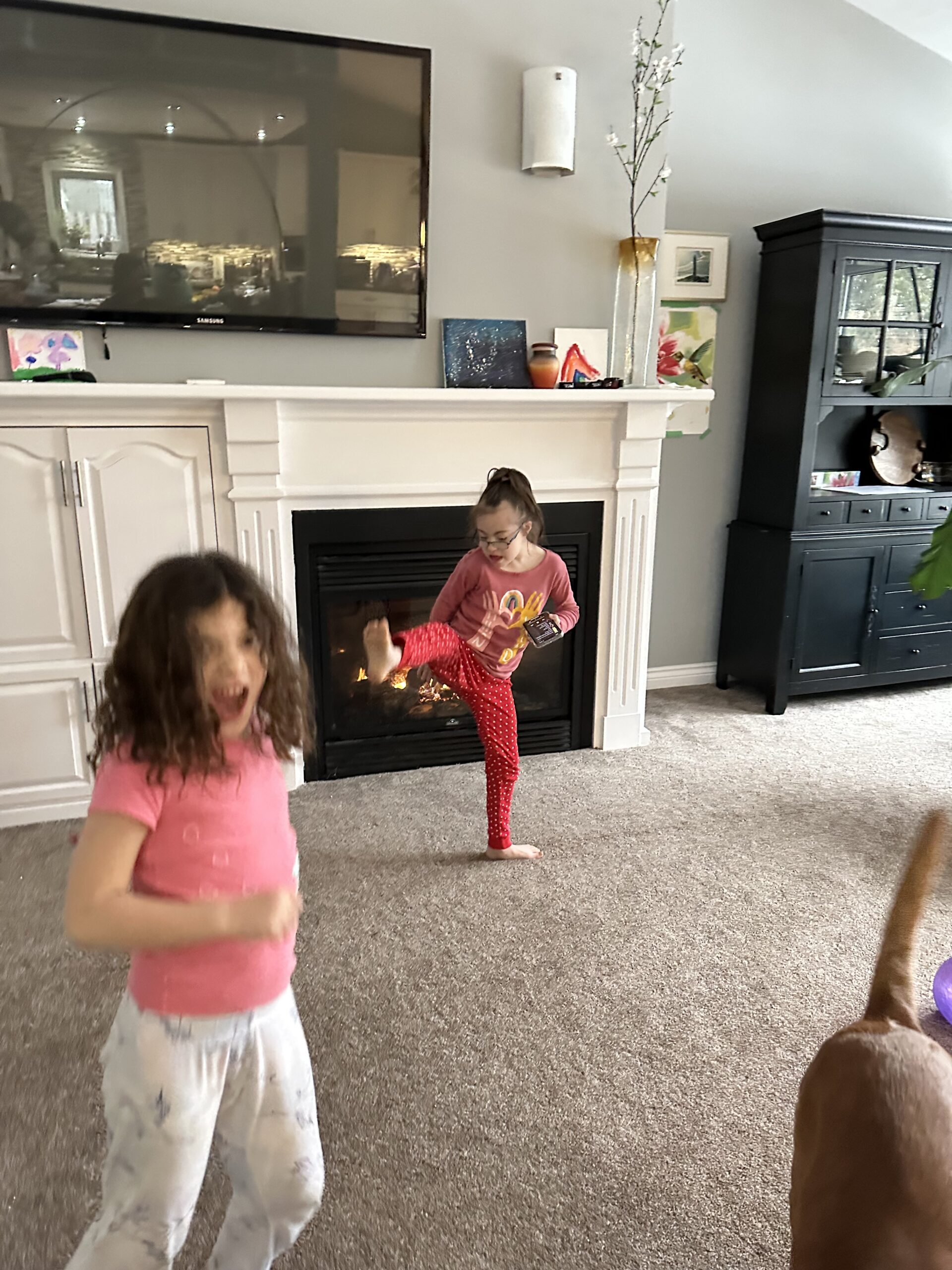Come wintertime where we live, once the temperature drops and stays firmly in the minuses dads from the neighbourhood come together to build a skating rink in the park behind our house. Last winter, when Elyse was nine, we were skating as a family on that rink, and Elyse was ready to go home.
“Okay,” I said casually. She wasn’t wearing skates. Elyse could leave any time she wanted, walk home, punch in the code, and voila, find her iPad or something else to do until the rest of us joined her. One of us wouldn’t be too far behind.
One neighbour, a dad, skated up to me as Elyse walked off on her own.
“Wow! That’s incredible,” he said. “I didn’t know she could do that.” I realized he meant walk home on her own. My daughter’s independence was a revelatory moment, and he was looking at me in awe. He didn’t know it was possible for a kid with a disability to be left out of sight, even for a short period of time and with parents in proximity. I let my position on the matter be clear, that you must know your kid.
“We’ve been working up to this point for years,” I explained. All those trips to the bus stop and walking to school, guided, but occasionally kid-lead. Leaving them to their own devices while we sequester ourselves in our offices to catch up on work. Allowing Elyse’s older sister to be in charge while my husband and I left for short periods of time to walk the dog. Giving the girls incremental pieces of responsibility, commiserate with their maturity and responsiveness. That time to manage oneself adds up.
Could Elyse navigate herself back to her own home safely across the park on a good day? Heck, yah!
Families have different goals and realities. I have met many families, moms and dads, with or without kids with Down syndrome who have never (ever) left their kids with someone else, let alone solo. That is not me as a mother; that is not our family. My goal for my kids is independence. Though occasionally, I forget to let go.
On World Down Syndrome Day (March 21), of all days, Elyse and I take a meandering walk together. And when I say meandering, I mean, let’s stop at every snowbank (the snowbanks are unabating) and kick the melting snow for five minutes. Me, the dog, Elyse: our trio crawls forward. The dog pulling me ahead, while Elyse kicks the snowbanks behind. The dog sits. We wait for Elyse to catch up. I try to appreciate the gurgling sound of the sewer water coming through the grate, the way stream rivulets cascade down the concrete sidewalks, the robins doing their dance of hopping from branch to branch above me. I try to appreciate the melodies of spring. But slow is rarely my speed in the middle of the workday. Though today isn’t about me, I remind myself. Elyse is taking herself on her own walk, and I’ve simply been invited to tag along. The bright sun, welcome, makes both of us squint.
We cross through the park behind our house, and as we near home I suggest she might like to stay out longer. I’m going inside to eat lunch.
“Open the garage door,” Elyse commands. And so I do.
I sneak glances through our front door window and watch my girl work on clearing a patch of icy snow away from the neighbour’s driveway. And while I feel the need to check on her incessantly, I know that in this separation we are both growing. My daughter needs her own space; to feel she is capable of holding her own.
Calmly, I wait for the kettle to boil and make my green tea. I pick up my salad bowl, fork, and drink, and head out the front door. I find a nice warm patch on our concrete walkway and settle myself where I can see Elyse.
She’s unimpressed with my appearance.
“I’m done,” she says, giving me a look. She puts away the shovel and heads past me back inside.
“Okay!” I say brightly, in the overture of the overeager, calling after her over my shoulder, as I scramble to stand back up, “Thanks for the walk!”



